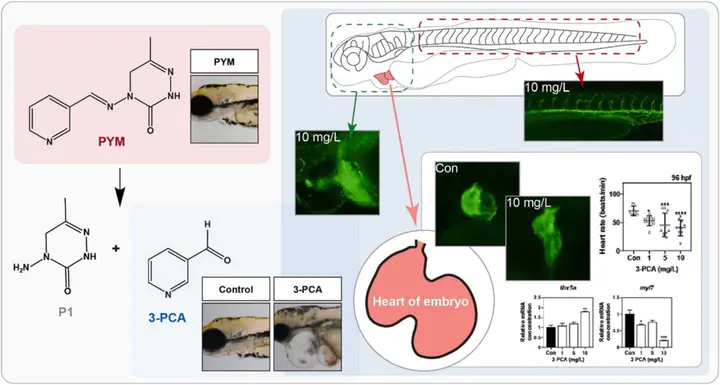Developmental toxicity of a pymetrozine photo-metabolite, 3-pyridinecarboxaldehyde, in zebrafish (Danio rerio) embryos: Abnormal cardiac development and occurrence of heart dysfunction via differential expression of heart formation-related genes

Abstract
Pymetrozine (PYM) is worldwide used to control sucking insect pests in rice-cultivated fields and it is degraded into various metabolites including 3-pyridinecarboxaldehyde (3-PCA). These two pyridine compounds were used to determine their impacts on aquatic environments, particularly on the aquatic animal model zebrafish (Danio rerio). PYM did not show acute toxicities in terms of lethality, hatching rate, and phenotypic changes in zebrafish embryos in the tested ranges up to a concentration of 20 mg/L. 3-PCA exhibited acute toxicity with LC50 and EC50 values of 10.7 and 2.07 mg/L, respectively. 3-PCA treatment caused phenotypic changes including pericardial edema, yolk sac edema, hyperemia, and curved spine, at a concentration of 10 mg/L after 48 h of exposure. Abnormal cardiac development was observed in 3-PCA-treated zebrafish embryos at a concentration of 5 mg/L with reduced heart function. In a molecular analysis, cacna1c, encoding a voltage-dependent calcium channel, was significantly down-regulated in the 3-PCA-treated embryos, indicating synaptic and behavioral defects. Hyperemia and incomplete intersegmental vessels were observed in 3-PCA-treated embryos. Based on these results, it is necessary to generate scientific information on the acute and chronic toxicity of PYM and its metabolites with regular monitoring of their residues in aquatic environments.